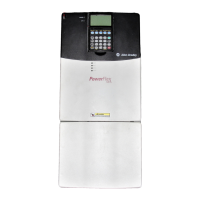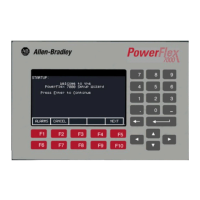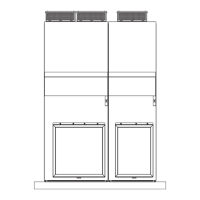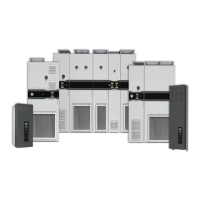Rockwell Automation Publication 20A-UM001N-EN-P - July 2013 109
Application Notes Appendix C
Stop Modes
Several methods are available for braking or stopping a load as described in the
table below.
In addition to these modes the drive can be programmed for “Coast” and “Ramp
to Hold,” and are described in further detail in Detailed Operation on page 111
.
Method Use When Application Requires . . . Braking Power
Ramp • The fastest stopping time or fastest ramp time for speed changes (external
brake resistor or regenerative capability required for ramp times faster than
the methods below).
• High duty cycles, frequent stops or speed changes. (The other methods can
result in excessive motor heating).
Most, if an
external resistor
or regenerative
device is
connected.
Fast brake • Additional braking capability without the use of an external brake resistor or
regenerative unit. Fast brake is effective during stop events, but not during
speed changes.
Important: For this feature to function properly the active Bus Reg Mode A or
B must be set to Adjust “Freq” and not be “Disabled”.
More than flux
braking or DC
brake.
Flux braking In some applications, Flux Braking can provide a method for fast speed changes or
stops. It is not suitable for high inertia loads or high duty cycle operation for
applications greater than 1 cycle per minute. This feature supplies additional flux
current to the motor and can cause motor thermistor or overvoltage faults in the
drive.
• Fast speed changes and fast stopping time.
• Typical stop from speeds below 50% of base speed (“Flux Braking” typically
stops the load faster than “Fast Brake” in this case).
Important: This can be used in conjunction with “Ramp” or “Ramp to Hold”
for additional braking power or with “Fast Brake” or “DC Brake” for speed
changes.
Important: For this feature to function properly the active Bus Reg Mode A or
B must be set to Adjust “Freq” and not be “Disabled”.
More than DC
brake.
DC brake • Additional braking capability without use of external brake resistor or
regenerative units.
Less than the
methods above.
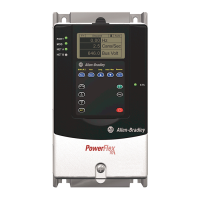
